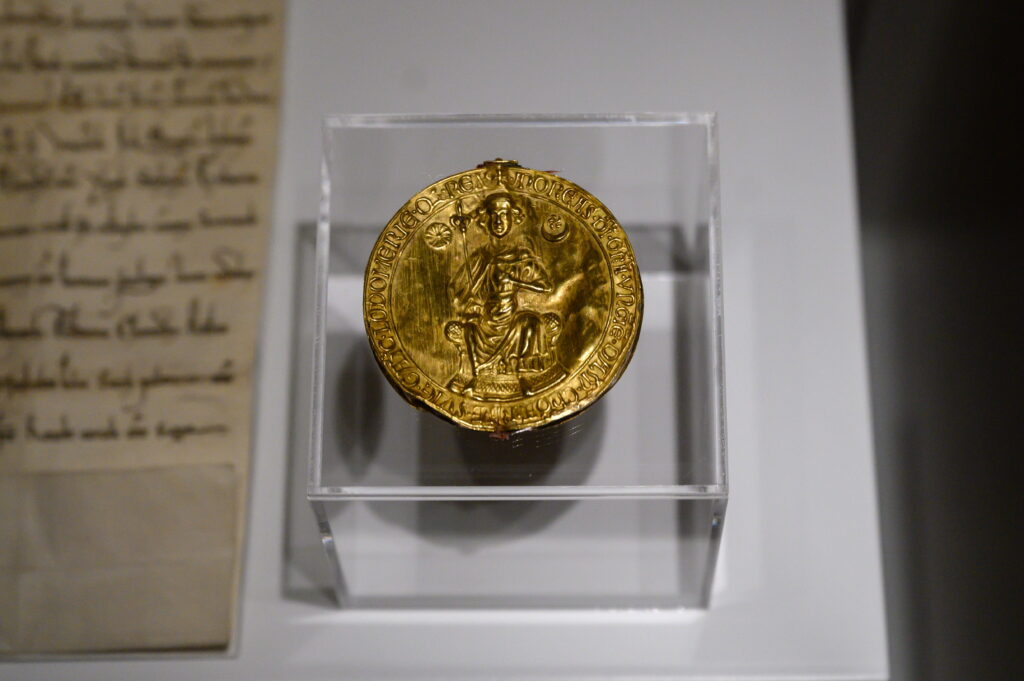The II. The letter of privilege issued by King András on April 24, 1222 is one of the foundations of Hungarian identity, historical perspective and political-public law thinking. On it stands the centuries-long, organically developing architecture of the Hungarian historical constitution, to which there is only one similar in Europe, the English one.
In the Fehérvár parliament, in the presence of his and Béla's son and heir to the throne, "the wellheads of the old and new deeds were examined", and after a long consultation, with the agreement of the king and the country, "that famous Doom, in which the rights of all the people are clearly explained, they are all determined by the Royal Highness. This Decree was confirmed by the king with a golden stamp." - With these words, Benedek Virág, the "former royal teacher of the gentle sciences" recommended our young people with great hope in March 1805. He was the first Hungarian translator and publisher of András's Aranybulla.
The last all-powerful - and one of the most significant and richest - ruler of the Árpád House, III. In the years after the death of King Béla (1196), especially II. After András ascended the throne in 1205, profound economic and social changes accelerated, mainly as a result of the large number of donations of royal estates and then entire counties, national and county offices, abuses of foreign advisers, large-scale immigration, as well as an increase in tax burdens and embezzlement. A new regulation was needed, a new compromise between the king and his subjects. After the English one, this is the first European “constitution” on the continent.

In the evening light II. Statue of King András on the colonnade of the Millennium Monument in Hősök Square in Budapest (Photo: MTI/MTVA/Csaba Jászai)
The next milestone in the centuries-long Hungarian legal history was the Trilogy completed in 1514 by István Werbőczy. The excellent jurist collected and compiled in a uniform, orderly form the laws that had been created since the publication of the Golden Bull, the established and accepted customary law, and his work was the "bible of the common nobility" until 1848. This is how the centuries-old, organically developing architecture of the Hungarian historical constitution was created.
The legal continuity of our historical constitution ended with the foreign (German, then Soviet) occupation that began on March 19, 1944, and it did not return even after the restoration of constitutional parliamentarism on May 2, 1990.
Nevertheless, the Basic Law of Hungary, promulgated eleven years ago, on April 25, 2011, states that we, the members of the Hungarian nation, respect the achievements of our historical constitution and the Holy Crown; we believe that protecting our identity, rooted in our historical constitution, is a fundamental duty of the state; we do not recognize the suspension of our historical constitution during foreign occupations.

The royal gold seal of András, from which the 31-point Golden Bull got its name, is preserved in the Szent István King Museum in Székesfehérvár. On this day 800 years ago, according to tradition, on Csúcsos Hill in Székesfehérvár, András announced the Golden Bull, the document that became the main pillar of the Hungarian legal system of the orderly state. Photo: MTI/Tamás Vasvári
The eight-hundred-year-old Golden Bull is implicitly included in this, so the basic principles contained in it and derived from it - including the rule of law and legal continuity, the separation of powers, personal freedom and the inviolability of property, equality before the law, self-government - are still alive today and are valid. And it is more than symbolic that the exact replica of the (probable) Golden Bull seal hangs around the necks of the members of the Constitutional Court, and the wall of the board's meeting room is decorated with a replica of the Golden Bull.

The monumental monument of Aranybulla is on Csúcsos-hegy in Székesfehérvár, at the place where, according to tradition, it was once proclaimed. Eight hundred years ago, on April 24, 1222, II. King András in Fehérvár, the Golden Bull, which established the rights of the Hungarian nobility for the first time, became one of the main pillars of the Hungarian legal system for centuries and became an important part of the historical constitution. Photo: MTI/Tamás Vasvári
Source and full article: Magyar Nemzet
Featured image: Parliamentary Museum













